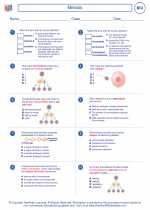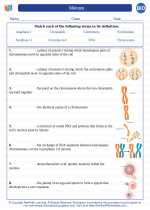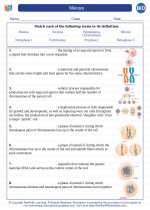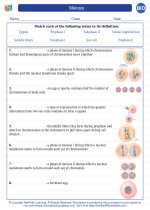Proteins
Proteins are large, complex molecules that play many critical roles in the body. They are made up of smaller units called amino acids, which are linked together in a specific sequence. There are 20 different amino acids that can be combined in various ways to form a wide variety of proteins. Proteins are essential for the structure, function, and regulation of the body's tissues and organs.
Structure of Proteins
Proteins have a complex three-dimensional structure that is critical to their function. The primary structure of a protein is the specific sequence of amino acids. This sequence determines the overall shape of the protein. The secondary structure refers to the local folding of the polypeptide chain into structures such as alpha helices and beta sheets. The tertiary structure is the three-dimensional arrangement of the entire polypeptide chain. Finally, some proteins have a quaternary structure, which refers to the arrangement of multiple polypeptide chains to form a functional protein complex.
Functions of Proteins
- Enzymes: Proteins act as biological catalysts, speeding up chemical reactions in the body.
- Structural support: Proteins such as collagen provide structural support for tissues and organs.
- Transport: Some proteins, like hemoglobin, transport molecules such as oxygen in the blood.
- Immune function: Antibodies are specialized proteins that help the body defend against foreign invaders.
- Hormones: Proteins such as insulin act as signaling molecules in the body.
- Regulation of gene expression: Certain proteins can bind to DNA and control the expression of genes.
Protein Synthesis
Protein synthesis is the process by which cells build proteins. It involves two main stages: transcription and translation. During transcription, the DNA sequence of a gene is copied into a molecule called messenger RNA (mRNA). The mRNA then carries this genetic information to the ribosomes, where translation occurs. During translation, the sequence of nucleotides in the mRNA is used to assemble a specific sequence of amino acids, forming a protein.
Study Guide
To study the topic of proteins, it is important to understand the following key points:
- The structure of proteins, including the primary, secondary, tertiary, and quaternary levels of structure.
- The functions of proteins in the body, including enzymatic activity, structural support, transport, immune function, hormone signaling, and gene regulation.
- The process of protein synthesis, including transcription and translation.
- The different types of proteins and their specific roles in the body.
It is also helpful to review specific examples of proteins and their functions, as well as any related diseases or disorders that involve abnormal protein function.
[Protein] Related Worksheets and Study Guides:
.◂Biology Worksheets and Study Guides High School. Meiosis

 Worksheet/Answer key
Worksheet/Answer key
 Worksheet/Answer key
Worksheet/Answer key
 Vocabulary/Answer key
Vocabulary/Answer key
 Vocabulary/Answer key
Vocabulary/Answer key
 Vocabulary/Answer key
Vocabulary/Answer key
